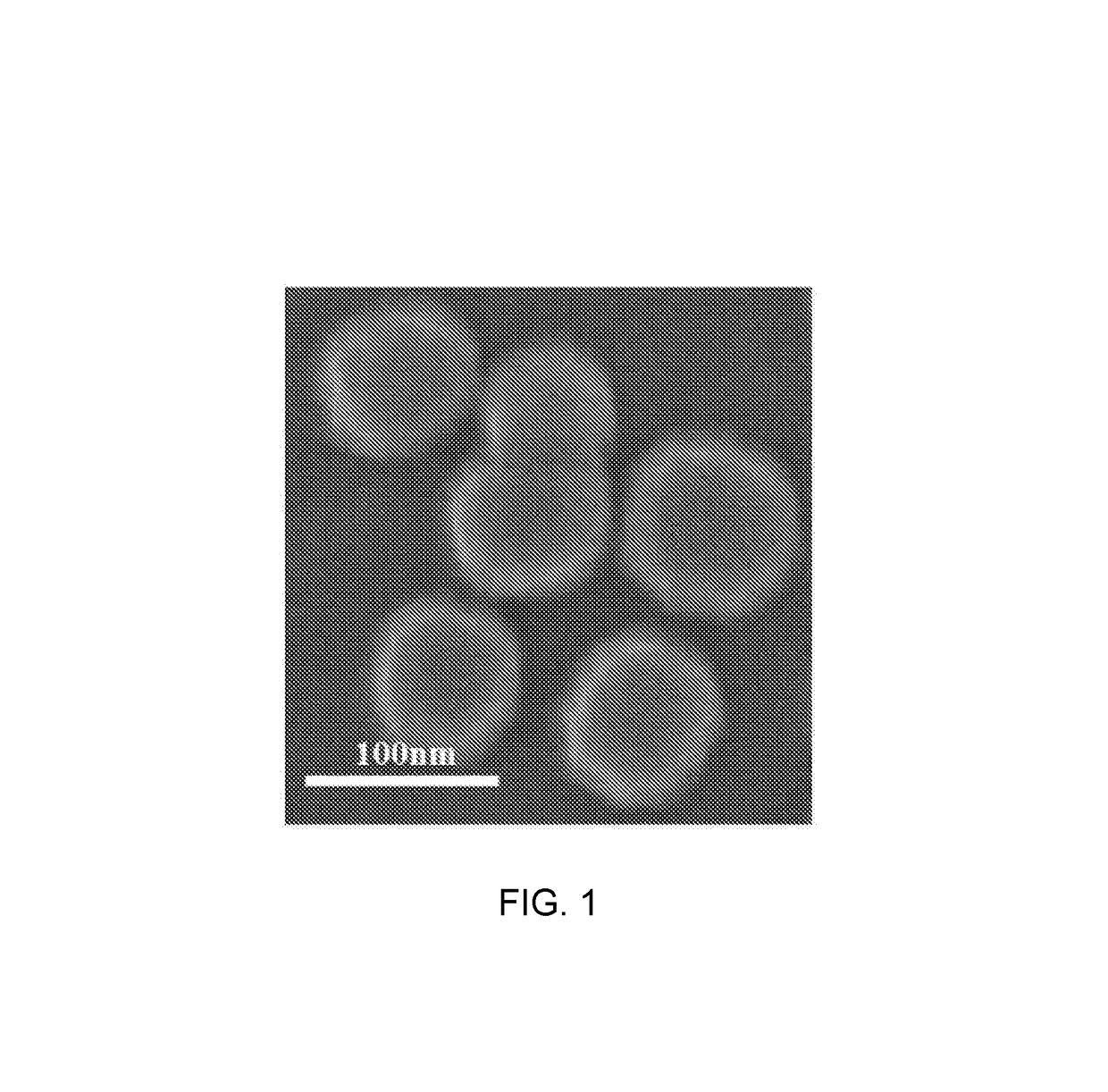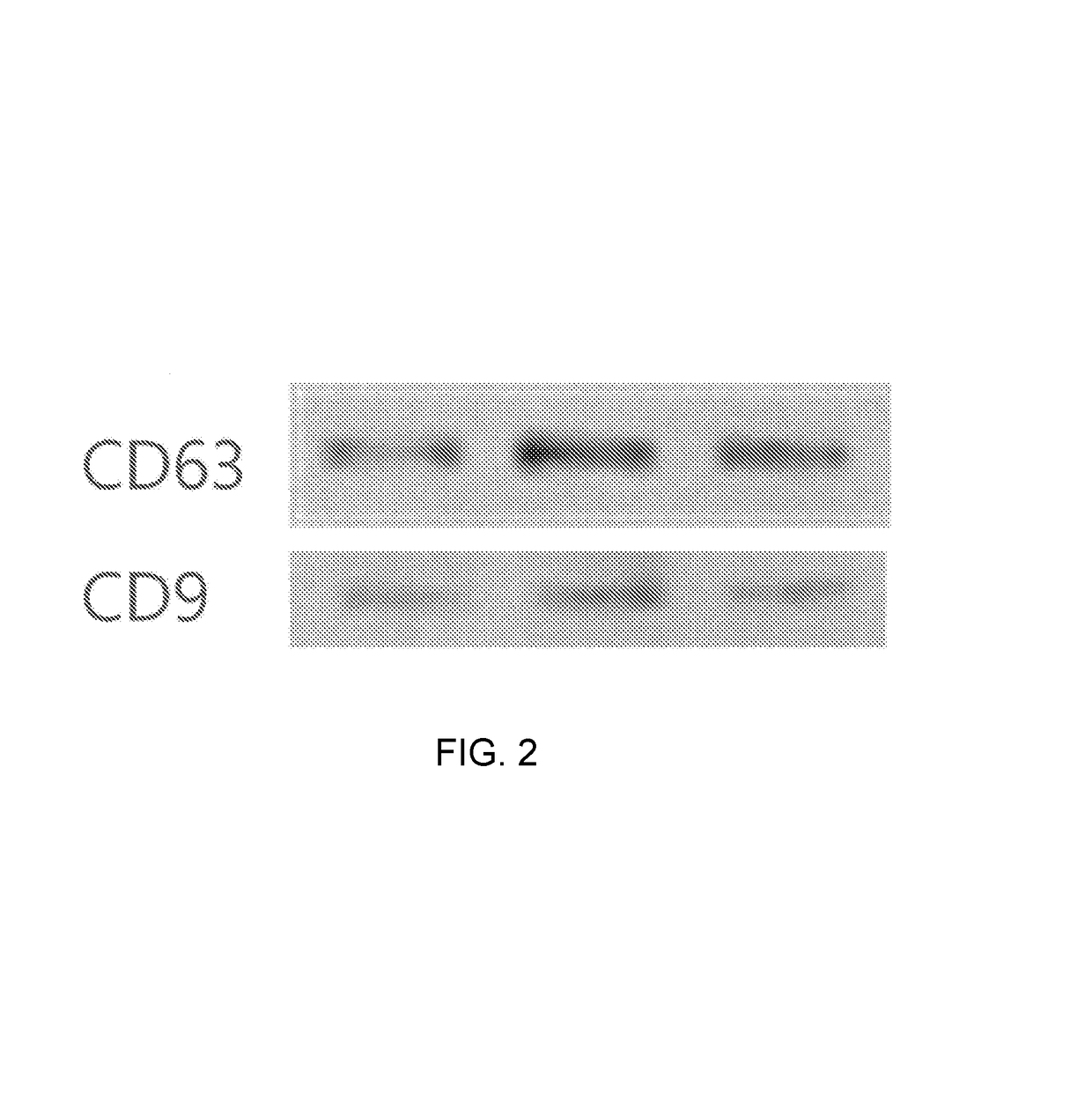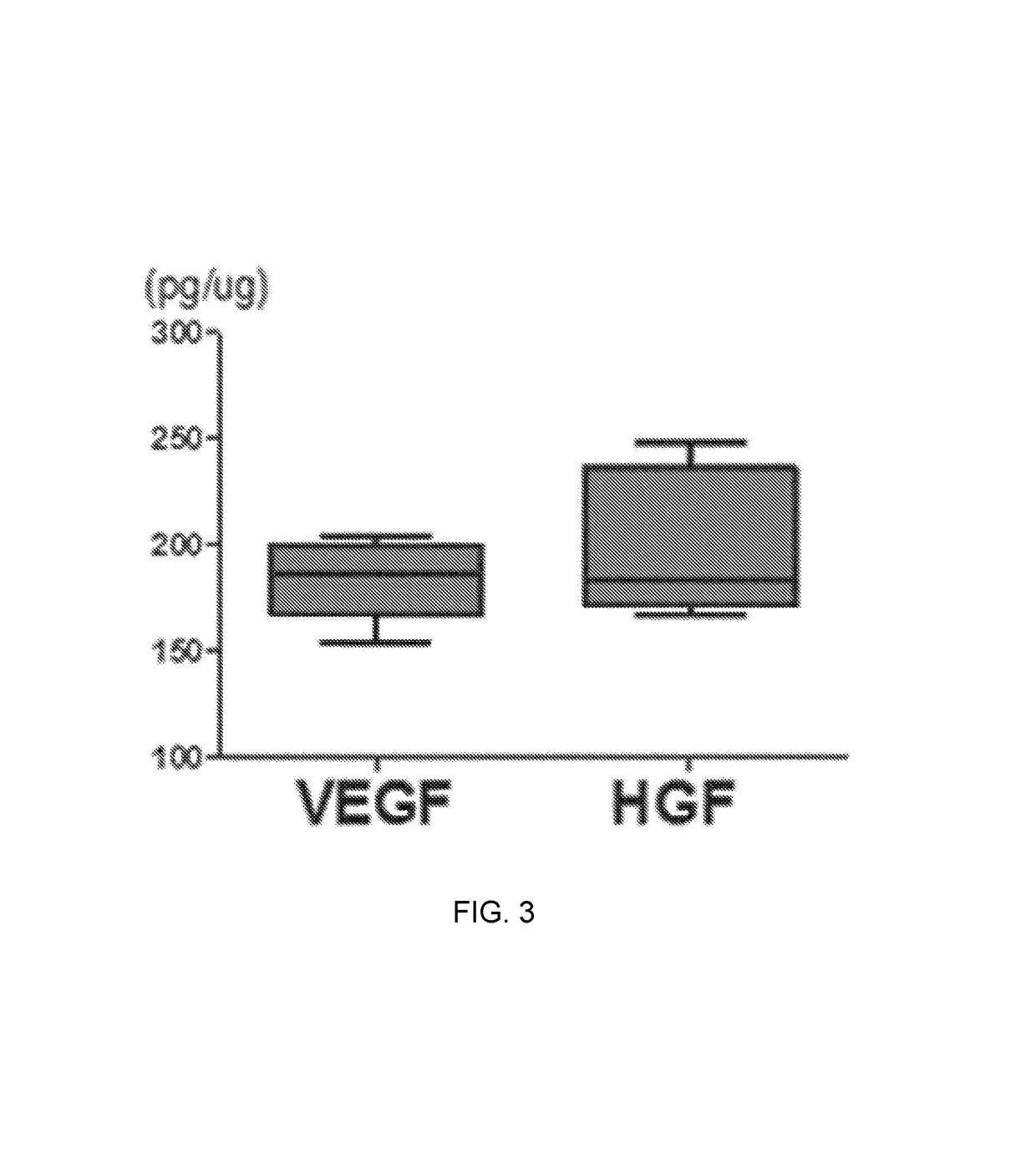Pharmaceutical composition for treating cerebrovascular diseases, containing stem cell-derived exosome as active ingredient
a technology of cerebrovascular disease and composition, applied in drug compositions, cell culture active agents, skeletal/connective tissue cells, etc., can solve the problems of limited stem cell movement, limited application of cell therapy, and gene modification to the human body, and achieve the effects of reducing hydrocephalus, reducing the incidence of ventricular enlargement, and reducing the risk of ventricular enlargemen
- Summary
- Abstract
- Description
- Claims
- Application Information
AI Technical Summary
Benefits of technology
Problems solved by technology
Method used
Image
Examples
example 1
of Stem Cell-Derived Exosomes
[0046]To isolate stem cell-derived exosomes, an ultracentrifuge was used. More particularly, mesenchymal stem cells were diluted to a concentration of 1×105 cells / ml and then aliquoted into 3 ml portions in 60 mm culture plates, followed by culturing for one week. When the cells were cultured to confluence in the culture plate, a medium thereof was changed with a new culture medium including thrombin at concentration of 50 U / ml in the medium, followed by culturing for 24 hours. Subsequently, the culture medium was aliquoted into 2 ml centrifugation tubes, followed by centrifuging at 4° C. and 10,000 g for 30 minutes. Supernatants were transferred to new tubes to remove cell debris. The supernatants were again ultracentrifuged at 4° C. and 100,000 g for two hours. Supernatants were removed and exosomes were isolated.
[0047]Exosomes isolated according to the process were observed by SEM imaging. Expressions of CD63 and CD9 (System Bioscience, Mountain View,...
example 2
tion of Nerve Cell Protective Effects of Stem Cell-Derived Exosomes
[0050]To investigate in vitro nerve cell protective effects of stem cell-derived exosomes obtained according to Example 1, the following experiments were conducted.
[0051]2-1. Determination of Thrombin Treatment Concentration
[0052]A rat fetus was sacrificed at 18.5 days' gestation. The cerebral cortex of the fetus was separated and then nerve cells therefrom were cultured for seven days. Death of the cultured nerve cells was induced by varying thrombin treatment concentrations (10 to 80 U / ml) and time (8 or 16 hours). Cell viability was measured using a cell count kit (Dojindo, Kumamoto, Japan). Results are illustrated in FIG. 4.
[0053]As illustrated in FIG. 4, it can be confirmed that, when nerve cells are treated with thrombin at a concentration of 80 U / ml for eight hours or at a concentration of 40 U / ml for 16 hours, the survival rate of the nerve cells is about 50%. Subsequent experiments were conducted using these...
example 3
tion of Therapeutic Effects of Stem Cell-Derived Exosomes in Intraventricular Hemorrhage Animal Models
[0057]To investigate the in vivo cerebrovascular disease therapeutic effects of stem cell-derived exosomes obtained according to Example 1, the following experiments were conducted.
[0058]3-1. Designs of Intraventricular Hemorrhage Animal Models and Experiments
[0059]Male SD rats (Sprague-Dawley rats, Orient Co, Seoul, Korea) were used as experimental animals. Experiments were conducted from 4 days (P4) to 32 days (P32) after birth. To induce the intraventricular hemorrhage (IVH), rats at P4 were anesthetized with 1.5% to 2% isoflurane. Subsequently, 200 μl of blood collected from the caudal veins of mother rats was slowly administrated into both cerebral ventricles (100 μl of the blood was administrated to each of right and left cerebral ventricles) according to a stereotaxic guidance (Digital Stereotaxic Instrument with Fine Drive, MyNeurolab, St. Louis, Mo.; coordinates: x=±0.5, y=...
PUM
| Property | Measurement | Unit |
|---|---|---|
| diameters | aaaaa | aaaaa |
| diameter | aaaaa | aaaaa |
| concentration | aaaaa | aaaaa |
Abstract
Description
Claims
Application Information
 Login to View More
Login to View More - R&D
- Intellectual Property
- Life Sciences
- Materials
- Tech Scout
- Unparalleled Data Quality
- Higher Quality Content
- 60% Fewer Hallucinations
Browse by: Latest US Patents, China's latest patents, Technical Efficacy Thesaurus, Application Domain, Technology Topic, Popular Technical Reports.
© 2025 PatSnap. All rights reserved.Legal|Privacy policy|Modern Slavery Act Transparency Statement|Sitemap|About US| Contact US: help@patsnap.com



